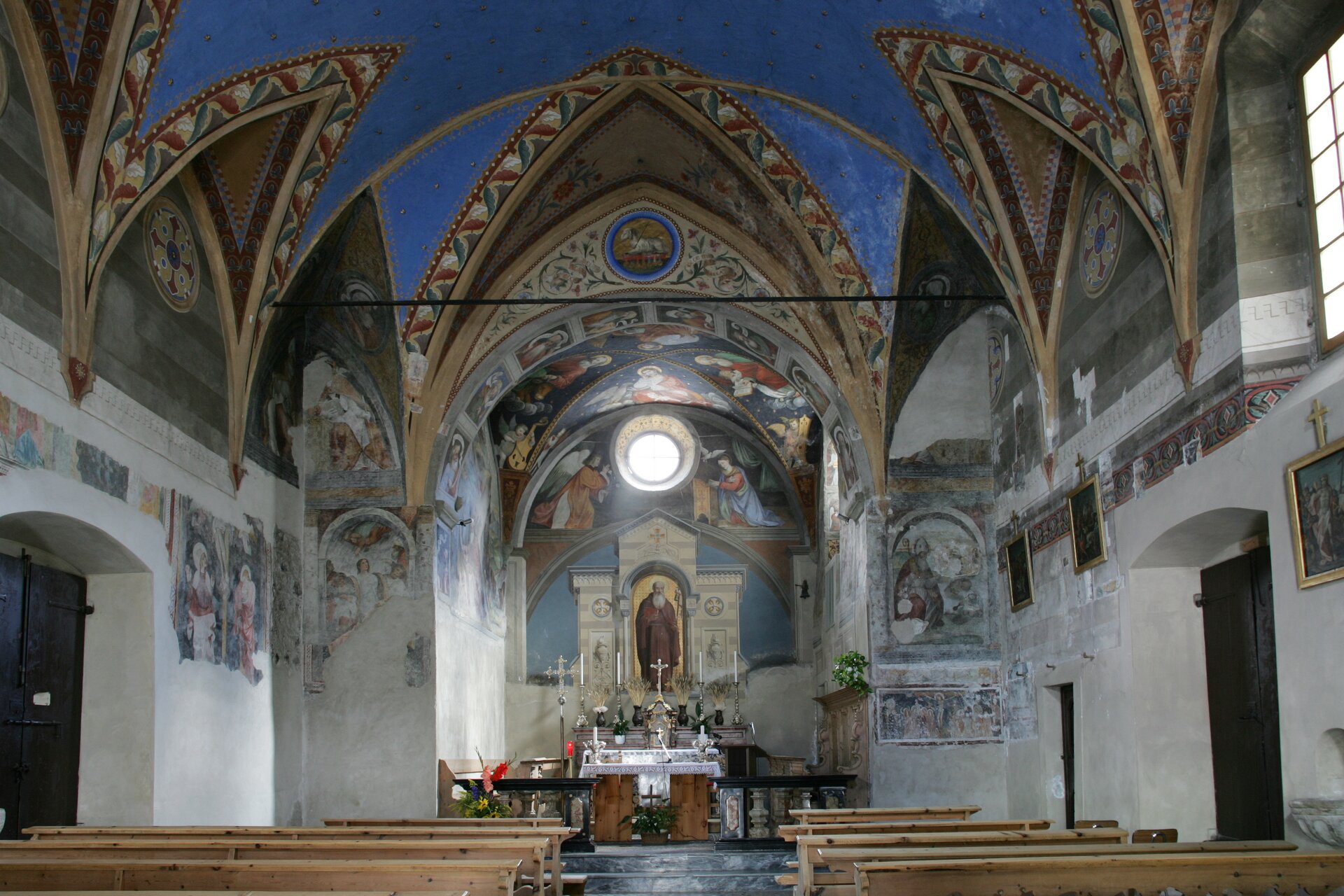Bormio isn't just a stunning location for year-round outdoor sports; it also boasts a fascinating history, with several religious buildings that attest to the town's wealth and importance over the centuries.
Make sure to look up when walking around Bormio's old town and neighbouring villages. You'll be struck by features you probably weren't expecting to see. Of all the cultural itineraries around Alta Valtellina, the one centred on religion is particularly fascinating.
With so many open churches, votive chapels, frescoes and sculptures, you'll find a deep-rooted faith in the area that has remained strong throughout the years.
Religious buildings and works of art in Bormio
Don't miss the Church of St. Gervasius and St. Protasius, the oldest in the village located in the main square, then cross the Combo bridge to visit the Church of St. Anthony Abbot, which houses a wooden crucifix that holds a great deal of meaning to the people here.
The Church of St. Ignatius and Church of the Holy Spirit, both in Bormio's old town, are both beautifully decorated on the inside, while a fresco of the Sunday Christ adorns the Church of St. Vitalis.
Religious art outside of Bormio
In Sondalo you can see the Romìt, another crucifix, and the oldest wooden sculpture in Valtellina, as well as the lovely Church of St. Martha.
In Valdidentro head to the Church of St. Gaul, which sits alone in the middle of a field, a haunting reminder of the period when witch hunting was rife, or the Church of St. Martin and St. Urban, a fortress church that dominates the valley.
In Valdidentro, the Church of St. Bartholomew and its ossuary bear witness to one of the most tragic events in Valtellina's recent history, the Val Pola landslide of 1987. Another ossuary in Cepina displays a splendid set of wrought iron railings.
And lastly, in Valfurva visit the tiny rural Church of the Holy Trinity in Teregua, on the edge of the fields.

